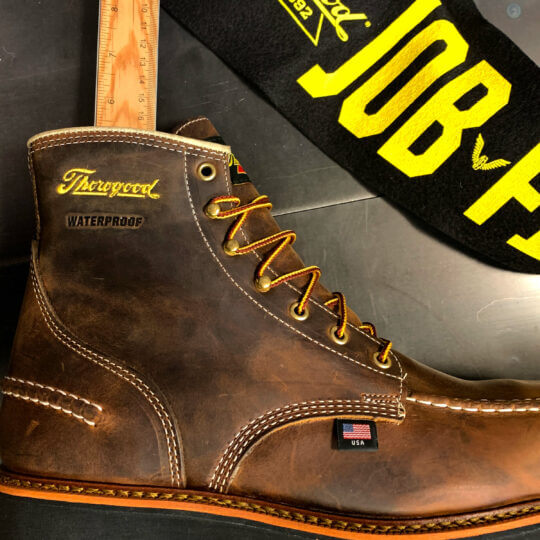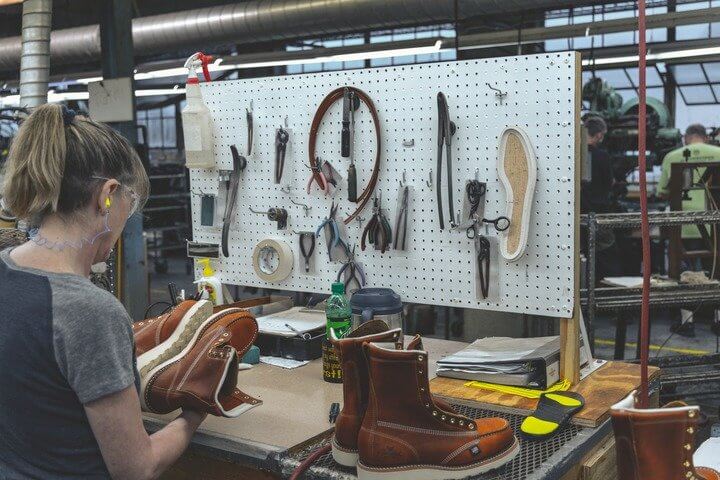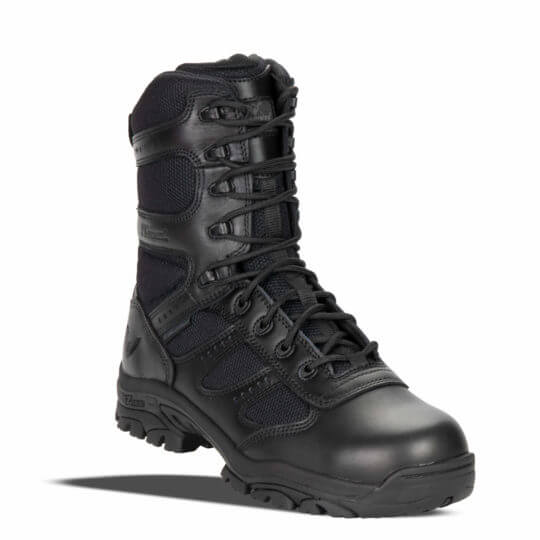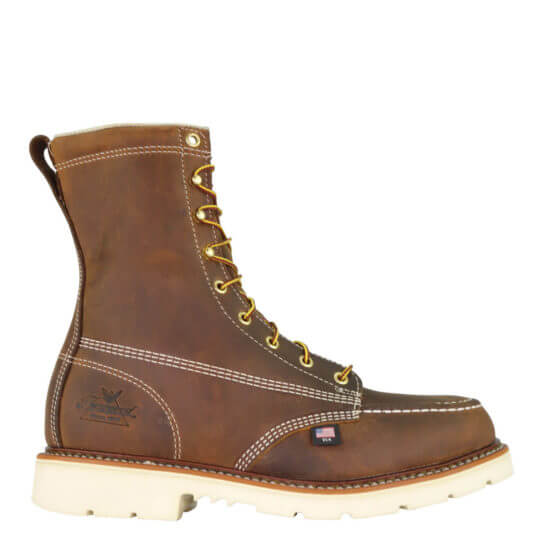Work Boot Height – Learn How to Measure a Boot Shaft
Whether you’re looking to buy your first pair of work boots or trying to find a better boot for the job, it’s important to select your work boot height based on how they’ll be used and what you’re comfortable wearing.
Common Work Boot Heights
- 6 inch
- 8 inch
- 9 inch
- 10 inch
- 11 inch
- 12 inch
- 14 inch
Bad luck if your lucky numbers are 7 or 13 – work boots aren’t commonly offered in those sizes.
Different occupations may require a specific work boot height to keep employees safe on the job. If your job doesn’t specify what you need, then you may have the freedom to choose between different models of short work boots or tall work boots. Since the Occupational Safety and Health Administration deemed footwear a form of personal protective equipment, your employer might even have to provide you with work boots! Learn how to measure a boot shaft to see what parts of your foot and leg will be protected and consider the benefits of different boot heights before choosing your work boots.
How to Measure Boot Shaft Height
If you have an existing pair of work boots you’d like to measure so you can re-purchase the same height, or so you can compare them to shorter or taller boots, there are a few easy steps to follow. 
First, grab a ruler or measuring tape. The boot shaft starts directly above the boot sole. You can run a measuring tape up the side of the boot from the top of the boot sole to the top of the shaft. This measurement is your boot shaft height. Heel height is not included, so regardless of whether you have a wedge work boot or a heel, you’ll still only be measuring from where the boot sole meets the boot shaft.
Compare the boot shaft height to your leg by measuring up the back of your leg from your heel towards the back of your knee. This will show you exactly how much of your leg a work boot will protect. If you’re unsure how tall of a boot you want, measure a couple different options and consider some of the advantages and disadvantages mentioned below.
Short Work Boots vs. Tall Work Boots
Work boot height can be both a help and a hindrance. Although tall work boots offer more protection, they can also inhibit flexibility and even be down-right uncomfortable for some wearers. Short work boots are often designed more like shoes to remain under the ankle bone. They generally take on a hiker boot appearance, but don’t be fooled – their height doesn’t mean they can’t share some of the same features as tall work boots.
Short work boots can still have safety toes, waterproof features, and electrical safety ratings. Some of our favorite short work boots include:
If you’re looking for a good work boot height between the two extremes, mid-height work boots may just be a perfect match. The two most popular boot shaft heights, 6 inch and 8 inch, are both considered to be mid-height work boots. Here are our most popular boots in each height:
Popular 6″ Work Boots
Popular 8″ Work Boots
- 1957 Series Briar Pitstop Waterproof Wedge Safety Toe Boots
- American Heritage Waterproof Composite Toe Wedge Boots
Tall work boots are great for more vigorous outdoor work and protection from the elements. They’re often the boots that hunters and agricultural workers prefer, especially if they come with insulation and waterproof features. Some people like them because they mostly come in a Wellington pull-on form (can you imagine doing up 30+ eyehook laces?!). We often think of tall work boots as all work boot heights 11 inches and up.
6-inch vs 8-inch Boots
An age-old debate we’ve seen over the years are whether it’s better to purchase 6-inch or 8-inch work boots. There are benefits to both boot heights, but here are some of the top reasons you’d want to choose one over the other.

6-inch Work Boot Benefits
- Slightly less heavy with more flexibility
- Faster lacing, more breathable than taller boots
- Less restrictive and relieves pressure on the shin bone compared to taller boots
- Practical and trendy so you can go from work to the office or out on the town
8-inch Work Boot Benefits
- Certain security positions require them as well as military and first responders
- Better coverage, protection, and support for ankles
- Many say they more comfortable and don’t rub on ankle bones as much
- Better protection from the rain, mud, dirt and snow
Who Buys 6-inch Work Boots?
- Contractors
- Electricians
- Woodworkers
- Engineers
- Warehouse Workers
Who Needs 8-inch Work Boots?
Some of the occupations or hobbies that would benefit from a slightly taller work boot include:
- Farming
- Roofing
- Logging
- Plumbing
- Hunters
- First responders for disaster recovery
- Mechanics (Check out Popular Mechanics Editor’s Choice – Our American Heritage boots
Tactical Boots vs Work Boots
Although tactical and work boots have a common goal of protection, one of the biggest differences is what job they’ll be used for. Work boots’ main purpose is safety. They typically have a composite or steel safety toe, an electrical rating, and are waterproof or water resistant. These boots are designed to protect your feet and ankles while on the job. On the other hand, while tactical shoes and boots are also designed with protection in mind, they usually need to meet two requirements: safety and style.



Tactical boots come in a variety of forms. They can even be disguised for formal occasions. Yes, glossy dress shoes can be designed as tactical shoes, combining performance with appearance. Certain jobs require these and they’re common for U.S. Postal Service employees, police, security, military, and other uniform-related occupations.
Choosing a Work Boot Height
Now that you’ve learned how to measure boot shaft height and read through some considerations of experienced boot wearers, you should be ready to select your work boots! Want those work boots to last longer? Check out some leather boot care tips!
